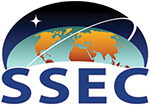Using Multiple Scanning Angles to Improve AERI Thermodynamic Retrievals
Presentation 1530-1600. Observing thermodynamic profiles under the planetary boundary layer (PBL) is essential to understanding atmospheric phenomena due to the high variability during the day and significant exchange of heat and water between land and the atmosphere within PBL. It is also linked to an improvement of a weather prediction model and the accuracy of severe weather nowcasts and forecasts.
The Atmospheric Emitted Radiance Interferometer (AERI) is an operational and commercially available instrument used to observe the vertical structure of temperature and water vapor mixing ratio from the ground. The AERI was developed for the Atmospheric Radiation Measurement (ARM) program by the Space Science and Engineering Center (SSEC) science team at the University of Wisconsin-Madison. AERI is also currently deployed worldwide in various climate regimes. Because AERI was initially designed to observe the downwelling IR radiance with a viewing zenith, AERI thermodynamic retrieval algorithm has focused on using radiance from the zenith direction. In contrast, the Microwave Radiometer (MWR), an operational instrument used to observe the T/q profile from the ground using radiance in the MW region, has used multiple scanning angles to improve retrievals. One of the remaining questions regarding AERI is if using multiple scanning angles can improve the accuracy of AERI retrievals.
In this study, we analyze thermodynamic retrievals and information content using simulated radiances at ARM sites and AERI-observed radiances during the ARM Cloud Aerosol Precipitation Experiment (ACAPEX) Campaign. Results have shown additional angular information increases the information content for temperature and water vapor. Use of multiple scanning angles has a better root mean square of error for temperature and water vapor mixing ratio below 1 km at both synthetic experiment and case study.
